Bonsai is a rewarding art form and every year more people from all around the world are falling in love with it.
However, many find it hard to start… or even figure out if bonsai is for them.
Before the internet, getting your hands on bonsai resources was a problem.
Now the problem is sorting through the thousands of resources to figure out which ones are great and which ones are not so great.
That’s where this guide comes in.
We’ve scoured the internet and beyond to find the best resources for beginners wanting to dip their toes into the world of bonsai. This guide won’t turn you into a bonsai master, but it will help you figure out if bonsai is for you and what your first few steps should be.
Table of Contents
Bonsai can be hugely enjoyable, but it’s not for everyone. In this first chapter we’ll take a bird’s eye view of bonsai and help you figure out if it’s something you want to pursue or whether you’re better off just enjoying bonsai from afar.
Bonsai in a Nutshell
Bonsai has quite a long history going back a thousand years or so. While some argue that it was brought over from China, what we consider to be modern bonsai is something that developed in Japan over the last few hundred years.
Bonsai comes from Japanese where it is made up of two characters (tray & planting). It is a living art form that involves taking ordinary trees and growing them in pots to restrict their growth.
The aim of a bonsai artist is to create artificially perfect trees resembling those in nature. This is at odds to the European art of topiary, where the aim is to use trees to create something that resembles anything but a tree.
It is often referred to as a hobby, but most people who are involved with bonsai see it as an art form. It is most popular in Japan and because of the history of the art form there, many trees are generational.
Unlike a painting or sculpture, a bonsai is never finished. Just as with a castle, you never truly own a bonsai; you merely take care of it for the next generation.
The Different Forms of Bonsai
While every bonsai is unique and the artist is not constrained by anything but his skills and imagination, classification systems have emerged that can help artists create bonsai that mimic the form of natural trees.
The five main forms are listed below:

While the above illustrated the main five forms, there are plenty more to look at. Because they’re beyond the scope of this guide, if you’d like to learn about the other popular styles of bonsai, here are some useful links:
The Different Sizes of Bonsai
Because you determine the size of the tree with the size of the pot, when choosing to create bonsai, deciding on how big you want your bonsai to be is another choice you’ll have to make.
There’s no right or wrong answer here; you’re free to work on trees that are whatever size you like. Firstly, consider what size of tree appeals to you. This will be different for everyone.
Secondly, consider that there are pros and cons to each size. Smaller bonsai tend to be cheaper, take up less space (obviously) and are easier to move and transport, so which size bonsai is right for you is purely up to your personal preference.
In Japan, there are classes of bonsai according to size. This is done in part to make exhibitions an apples to apples contest, but also so that the scale of a bonsai is understood when looking at photos. Without a reference point it can be hard to gauge how large a particular tree is.
There are several classes of size, ranging from the 1-3cm keshitsubo to the two metre tall Imperial Bonsai. Wikipedia has a good list of the different Japanese classes of bonsai. Here’s an illustration of some of the more common bonsai sizes:
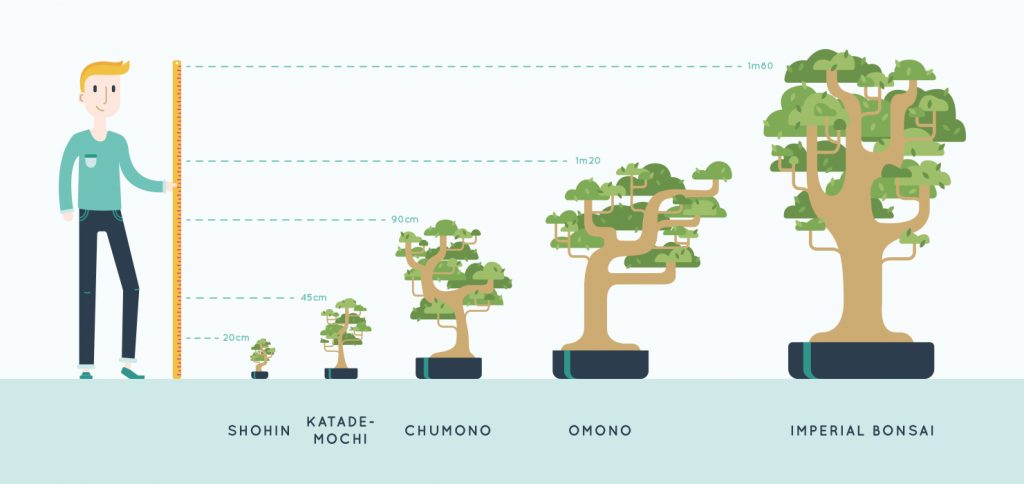
Indoor vs. Outdoor Bonsai
Despite what a lot of people think, you can’t always grow your bonsai inside. It might be tempting to keep your trees inside so that you can see them while you go about your day, but the reality is a little more complicated.
While some species can be grown indoors, most cannot. Most trees require a period of dormancy to survive and thrive. In deciduous trees, this period is triggered by cold, so if your tree is inside and soaking up your heating then it will never enter this period and it’s lifespan will be limited.
Getting the right amount of light is also a problem with indoor bonsai.
And if you’re someone that uses air-conditioning, that can also be a problem since aircon reduces humidity and healthy bonsai require some humidity.
What’s Required to get into Bonsai?
Before starting with bonsai it’s important to know what you’re getting yourself into. Just like you wouldn’t take ownership of a pet without first understanding the size of the commitment.
One thing that beginners want to know is how long it will take before you have a beautiful bonsai of your own. When reading about bonsai it’s easy to come across references to trees that are a hundred years old.
Does it really take that long to create a beautiful tree?
Of course not.
To go from a basic tree to a bonsai can take a few months if you’re careful and know what you’re doing. Half the battle is shaping your tree, which is governed by the type of tree and the season.
That said, a tree is never “finished”; it’s a living organism and therefore always a work in progress.
Secondly, beginners also want to know about how much time is required to style and maintain their bonsai.
It’s a bit like taking care of a pet.
It doesn’t necessarily take a lot of time each day (bonsai don’t need to be taken for a walk), but you will need to put in a little bit of time each day, and a few times a year put in significantly more time.
Regular watering and fertilising doesn’t take long, but if you fail to water your bonsai then they won’t live very long.
What Equipment do you need?
To take care and style your bonsai you will need some basic equipment.
Julian Adams, a renowned bonsai artist, recommends the following pieces of equipment:
- Concave pruner
- Bud scissors
- Wire
- Wire cutters
- Knob cutter
- Root hook
- Root cutter
In addition to the above, you’ll likely need a few specialised bits and pieces such as a watering can, chopsticks for bare rooting and so on.
Adams prefers Japanese tools and finds that even cheap tools from Japan outperform more expensive versions from elsewhere. You can read more about some of the equipment needed here:
Basic Tools for Bonsai by Julian Adams
Another great article on bonsai tools is by Bonsai Empire.
What are the costs involved?
As with any endeavour, it’s helpful to know how much a foray into bonsai will set you back.
And as with any endeavour, the true number is hard to pin down.
How long is a piece of string?
You can acquire your first bonsai for free, you can spend a little, or you can spend $750,000.
The same applies to equipment. You can buy a cheap ten piece set for $50, or spend $300 on a single tool.
How much to spend depends on your level of interest and your financial situation, but it’s fair to say that even on a limited budget you can really enjoy the art of bonsai.
Choosing Bonsai for your Climate
One of the factors that will limit what trees you can grow is your climate.
Trees grow best in climates they are indigenous to.
People living in temperate climates generally have a wide range of trees to choose from, while those from the tropics or bitterly cold climates may have to choose their trees with more care.
Before you get hold of your first bonsai, check to see that the bonsai you want can survive in the climate you live in.
Here are a few links you can use to check what climate zone you’re in:
- Australian Climate Zones
- American Plant Hardiness Zone Map
- Canadian Temperature Guide
- UK Regional Climates
- Climate of New Zealand
Most Common Species of Bonsai
Chances are when you think of bonsai there are a few species that pop into your head.
While you can turn any species of tree into bonsai, some have proven to be more popular than others.
There are too many to list here, but here’s a good link to familiarise yourself with some of the more common species:
List of species used in bonsai
Your First Bonsai
If you have not been scared off by the information so far, then figuring out where to get your first bonsai is a logical next step.
And as with everything else bonsai, it’s not as straightforward as you might believe.
Many beginners start with a “mallsai”, which is a cheap bonsai widely available in malls. These are typically not the highest quality trees and while they might be fun, if you’re serious about bonsai then there are other methods to use to acquire your first bonsai.
We’re going to look at the main five ways.
One method is to grow your own bonsai from a seed. There’s something special about working on a tree that you grew from nothing, but if you’re in a hurry to get started, then this isn’t the method for you since it can take around two years before the tree is strong enough to be styled.
Another method is to use cuttings. This involves taking branches from a healthy tree and then planting it in soil to grow as a new tree. One major advantage to this method is that the new tree will retain characteristics of its parent tree; so if the original was a really great tree to work with, so will the new one.
However, this method can still take quite a long time and if you are bonsai-less then finding a tree to get a cutting from can be difficult.
A third method is to use grafting or layering. Again, these methods can take time and require skills that you probably don’t have at this stage. If you’d like to read up on layering and grafting, Bonsai Empire again have some great articles:
Air Layering as a Bonsai cultivation technique
Grafting trees as a Bonsai cultivation technique
A fourth method is to find a tree in the wild that has been constrained by nature. Fans of the karate kid will remember Mr. Miyagi climbing down a cliff face to find a tree and bonsai found this way are called yamadori.
Finding yamadori is somewhat of a sport in and of itself in Japan. However, this is not something for the uninitiated to attempt. Not only do you need to be able to identify which trees are suitable, but you also need to know how to safely take the tree home.
Not to mention that these days there are restrictions in most countries as to what you can legally take from forests.
That leaves us with one final method:
Start with a bonsai that has already grown.
This is probably the best place to start since the learning curve is much shallower and it will take you less time to grow something beautiful.
This method is not without some difficulty, however.
You still need to learn to judge a tree yourself so that you buy the best tree for your money. Ideally you would have someone more experienced help with your purchase, but if you’re on your own, here is a video from Mark D’Cruz from Ma-ke bonsai that will run you through the process:
How to Buy Bonsai Trees: A Guide to Buying Bonsai Trees for Beginners
Here’s one example of a site that you can buy trees from: Nursery Tree Wholesalers
At this stage you should understand the basics of bonsai and be able to buy your first tree.
Now we can move onto chapter two, where you’ll learn to keep that first tree alive!
Once you understand the basics and have the know how to get your hands on your first quality tree, you need to learn how to keep that tree alive and healthy.
You can have all the styling skills in the world, but if you keep killing trees then those skills will go to waste.
Many people kill trees when they start out, but if you follow the tips in this chapter then you won’t be one of them!
Watering
Keeping your trees well watered is one of the fundamentals of bonsai maintenance.
Humans can’t go long without water and trees aren’t much different.
If you’re to become a bonsai artist then you’ll be spending a little bit of time watering your collection.
And while most people understand that trees can die from lack of water, most are unaware that overwatering can also be fatal to your bonsai.
It shouldn’t happen if you’re using good soil, but if too much water gets trapped inside the pot then the roots can rot away.
How often you need to water, how much water to use and what sort of watering can (your regular garden can won’t do) are all things you need to consider. Not to mention that the watering schedule will also differ depending on the species of tree you use.
The specifics are a little beyond the scope of this course, but we’ve found a good guide for you to read.
Here’s a good guide on watering bonsai: Click here
The Right Soil
Using the right soil from the get go is also important.
Bonsai soil tends to be classified according to texture and type.
The size of the pot determines the texture needed, but the types of soil is determined by the species of the tree and whether the tree is being trained or not.
Gaining a full understanding of bonsai soil can get tricky quickly; you need to understand the role of soil, drainage factors, as well as what components to use (there are many to choose from).
Here’s a great guide on Choosing Soil for Bonsai, from Kaizen Bonsai.
And here’s another link to research done by a member from the Finger Lakes Bonsai Society that’s really worth a read.
Repotting Your Bonsai
Learning to repot your bonsai is another important skill that you’ll need to master if you’re to become a bonsai artist.
Trees in nature have root systems that grow outward seeking nutrients.
It’s what trees are programmed to do.
Your bonsai doesn’t know it’s in a pot so its roots will still grow outward in the futile attempt to find nutrients.
At first this isn’t a problem, but eventually the root network becomes so dense and thick that the tree struggles to get the nutrients it needs.
Before this happens you need to take your bonsai out of its pot, trim the root system back and then repot it.
Here’s a guide that explains the process step by step:
And here’s a great video that demonstrates how to do it:
Bonsai Masterclass – Stress Free Bonsai Repotting with Master Nobu Kajiwara
Bare Rooting
Even the best quality soil doesn’t last forever.
After a certain amount of time, soil breaks down and is no longer able to do its job. Time scales vary, but five years is about how long most soil will last.
When this happens, you need to replace the old soil with fresh soil; this process is called bare rooting.
You’ll need to take the bonsai out of its pot and then carefully remove the soil from the roots. Bamboo chopsticks are a popular tool for this particular job.
Whether to bare root your bonsai or not is a contested topic in the world of bonsai, but here’s a video of someone demonstrating how to do it if you would like to see it:
Fertiliser
Trees need nutrients to grow and survive just like people, but bonsai face a challenge when getting all their nutrients.
Trees growing in the wild can seek out nutrients from wide areas. This is why their root systems stretch out far and wide.
However, bonsai are constrained by their pot, so they rely on the surrounding soil for their nutrients.
This soil quickly loses its nutrients and therefore in order to keep your bonsai alive you need to supply it with regular fertiliser.
There are a few guidelines to follow when selecting your fertiliser; the balance of nitrogen, phosphorus and potassium should generally be kept equal.
You must also be careful not to overfeed, since this this can damage the roots.
Here’s a great video by Orlando Bonsai TV that explains bonsai fertilisers in more detail:
Bonsai How to – Fertilizers for Bonsai
Pests
Humans aren’t the only creatures to enjoy bonsai.
Unfortunately, several species of pests can infest your bonsai and cause it serious harm.
Make it part of your weekly ritual to closely inspect your bonsai for any signs of pests. Ants, aphids and boring insects can all wreak havoc on your trees, so learn to look out for them. Caterpillars and earthworms are also not great to have around.
Here are a couple of guides that can help you in identifying and treating pests:
Bonsai Plant Pests to Watch for!
Weeding
In order for your bonsai to be as strong and healthy as possible, it needs to take in all the nutrients it needs.
This can’t happen if weeds invade your pot and start taking nutrients for themselves, so weeding must be another activity that is part of your regular workflow.
Weeding is pretty straightforward, but if you’d like a little more information on how to do it, here’s a useful guide:
Now you’re a certified green thumb and can keep your bonsai alive, you can start to learn the fun stuff.
In this chapter you’ll learn the basics of styling your bonsai; taking a regular tree and transforming it into something breathtaking.
Styling Fundamentals
Styling your bonsai is the essential part of the art form. It’s what people think of when they think of bonsai and involves literally bending the tree to your will.
It’s not something you do once and then forget about; styling continues for the life of the tree.
Before you do anything drastic, study the tree in its natural form. Develop a good understanding of what you’re aiming to achieve before you start the work.
Look at other bonsai for inspiration and ideas of what you could aim at.
Hundreds of books have been written about styling bonsai and we aren’t aiming to teach you everything here; just the basics.
Styling typically begins with the trunk.
Once the trunk is looking good, wire the branches into the shape you want. Finally, prune the tree to make it look just right.
Obviously doing this is easier said than done, so we’ll be including plenty of links at the bottom of this guide to teach you the specifics of how to style your tree.
Next up we’ll take a quick look at what wiring is and how it works.
Wiring Your Bonsai
You use metal wire to bend the tree in the shape you want.
When you bend a tree and keep it there with wire, small splits will appear in the inner layers of the tree. As those splits heal the tree will remember its new position.
How long this process takes depends on how quickly the tree grows. This means that different species will take different amounts of time to be trained.
The season also matters.
And which season is best for your tree also differs from species to species. Typical time frames are from 2-3 weeks to several months depending on the above variables.
Once your bonsai has taken shape, removing the wire correctly is important so you don’t damage the tree. While some experienced artists do unwind it by hand, many more simply cut it off at the bends.
Shaping your trees with wire is obviously a fundamental skill for styling bonsai, so if you’d like to learn a little more, here is a fantastic tutorial from Ryan Neil of Bonsai Mirai:
Pruning Your Bonsai
Once the trunk has been shaped and your branches are where you want them to be, it’s time to prune the tree.
Again, this is a complicated subject and not something we’re experts on. So to learn more about pruning your bonsai, you’ll want to get your hands on some quality training materials.
This short video from Peter Warren should get you started:
Bonsai: Styling Your First Bonsai Tree
Choosing Your Pot
Bonsai isn’t bonsai without a pot, so choosing the right pot for your bonsai is an important decision.
It’s important not only for functional reasons, but the aesthetics of your pot also matters.
The right pot should display your bonsai to the greatest advantage; the same way a frame does on a painting.
Typically round pots are best for slanting bonsai, while upright bonsai look best in oval or rectangular pots.
The colour should also contrast the tree. Here are a couple of videos that should help you choose the right pot for your bonsai:
Bonsai Pots Selection Guide by Mark D’Cruz
We recently published an article featuring some of the most influential bonsai artists from outside Japan.
As part of the post we asked them for tips for beginners and you can read some of them below:
My advice is do not have too many trees. Only have the number of trees that you can comfortably look after. In the initial stages one collects, grows and buys everything to feed your passion and you end up with a garden full of mediocre trees at best that all need care.
Limit yourself to just a few each year but make the ones that you do obtain special. The material you select is also very important. You cannot make a good bonsai out of poor material and choose only plant that are suited to your garden. – John Armitage
Don’t have too few trees. Get enough so you can keep occupied, and learning, and most importantly not be nags to our trees. They need a break, they need to grow. And don’t specialize too early. Explore.
Ultimately about 20-30 trees is more than enough for even serious, skilled enthusiasts to keep in top shape. The most useful study is from blogs, videos, and especially in-person teachers—all those are preferable to books. – Michael Hagedorn
My most important advice would be to find a good teacher to start your study with. Although there are a few professionals who self taught, it is much more advantageous to learn from someone who is proficient at it.
Secondly, have an open mind with your chosen teacher. There is a lot of bad information on the internet and in old books that you will probably assume is true but can be corrected with better information. – John Romano
By now you should have enough information to whet your whistle, but it is not nearly enough to turn you into a bonsai expert.
Bonsai used to be really difficult to learn because of the lack of resources in English, but since the internet that hasn’t been a problem.
The problem has been figuring out which resources to trust.
We’ve done the research so you don’t have to. Below you’ll find links to resources that we’ve found useful or have been recommended to us from bonsai experts.
The Best Books on Bonsai
If you’ve decided on starting down the path of bonsai, then you’ll want to get your hands on some books. There are over a thousand books on bonsai, but below you’ll find a handful of our favourites:
Bonsai: The Beginners Guide by Bonsai Empire
The Complete Book of Bonsai: A Practical Guide to its Art & Cultivation by Harry Tomlinson
The Complete Practical Encyclopedia of Bonsai by Ken Norman
Bonsai Techniques (Vols. 1 & 2) by John Naka (Can be hard to find but worth the effort)
The Best Bonsai Websites
There’s no shortage of good bonsai websites these days, but below you’ll find links to a handful of our favourites.
North East Lincs Bonsai Society
The Best Bonsai YouTube Channels
Since bonsai is a visual art, one of the best ways to learn is through video. Below you’ll find a handful of the best bonsai YouTube channels. There are of course many more but these five will be a good starting point.
Morten Albek’s Shohin Bonsai Europe
Bonsai Clubs Around the World
Getting hands on experience is one of the best ways to learn and joining a local club is probably the best way to meet people in your local area who can teach you a thing or two.
Once again Bonsai Empire has what you need:
List of Bonsai Clubs around the World
Bonsai beginners are full of questions and we know that the above content can’t have answered them all.
We’ve done our research and figured out the most frequently asked questions that bonsai beginners have.
Frequently Asked Questions
Which bonsai trees are safe for cats?
We actually created a post on this very subject not too long ago.
Which bonsai tree grows the fastest?
If you’re in a hurry, then varieties of Ficus trees could be for you.
Which bonsai trees flower?
Bonsai Empire have provided an article with ten trees that flower.
Which bonsai tree is right for me?
That’s not an easy question to answer and depends on a number of factors. Read through the first couple of chapters to get a better idea.
Will bonsai grow in the office?
Again it depends. Some species will be fine indoors, but most won’t.
How big will bonsai trees get?
As big as you let them! Bonsai are constrained by the size of the pot, so you can grow a bonsai as large or small as you like.
How to thicken a bonsai trunk?
This video should provide you with what you need.
How bonsai plants are kept small?
Trees grow when their root systems can grow larger and absorb more nutrients. By constraining the size of the root system with a pot, you restrict how large the bonsai grows.
What bonsai tree was in the Karate Kid?
It was a Juniper tree, one of the more popular varieties of bonsai to grow.
What does bonsai mean?
Bonsai is made up of two Japanese characters meaning “tray planting”.
How to tell if a bonsai tree is dead?
One way to tell if your tree is dead is to water it. If it doesn’t revive at all, there’s a good chance it’s dead. If you want to be more certain, you can peel a little of the bark off and check the condition of the wood inside; if there’s no sap or green anywhere in sight it’s safe to say that your bonsai is dead.
Why bonsai leaves are turning yellow?
There are several reasons why your leaves are turning yellow. It could be due to underwatering, stress or even exposure to cold.
Why bonsai trees are so expensive?
When you look at a beautiful bonsai tree, you’re seeing the results of years (possible decades) of work and effort. There’s also artistic value in the bonsai since creating something amazing is quite rare.
Why are bonsai pots shallow?
Bonsai stay small because of the pots. Trees grow by sending root systems out to collect nutrients. By using a shallow pot the root system is artificially constrained, so shallow pots are essential to bonsai.
Are bonsai trees hard to grow?
Growing and styling bonsai is certainly not a skill you can pick up in an afternoon (or by reading a single guide on the internet!). While you may never become a bonsai master, just about anyone can learn enough to enjoy the hobby.
Are bonsai trees poisonous?
Bonsai is simply taking normal trees and confining them to small pots to ensure that they stay small. There’s nothing about this process that causes trees to become toxic. However, there’s nothing stopping you from taking a poisonous tree and turning it into bonsai, if you really want to do so.
Are bonsai trees cruel?
If you kept a person in a confined space and used wires to deform their limbs for artistic purposes then you would definitely be accused of cruelty. However, trees are not people, they are not sentient and do not feel pain, so creating bonsai is not cruel.
Are bonsai trees alive?
Yes they very much are. The only difference between a bonsai and a regular tree is the size. Bonsai are constrained by the size of their pot, but they are very much alive. If a tree is not alive then it cannot be styled, so bonsai artists must first learn to keep a tree alive and healthy.
Are bonsai trees poisonous to dogs?
There’s nothing about bonsai trees that make them inherently poisonous to dogs or any other animal. Bonsai is simply the art of styling artificially small trees. A large tree that is toxic to dogs will remain toxic to dogs in bonsai form.
Difference between bonsai and penjing?
What we know as bonsai originated in China, but was developed in Japan. As the two art forms evolved separately, differences began to arise. The main difference is that bonsai tends to be focused on the tree, whereas penjing involves the greater landscape as well.
That’s all folks!
That’s all we’ve got for you. Our aim was to take you as a complete beginner and show you the ropes. You won’t be a bonsai master just yet, but hopefully you have a better idea of the path to take and whether or not it’s a path that’s right for you. If this all seems like a bit much work, but you’d still like to enjoy bonsai, we might have an option or two for you.
We also hope that this post evolves over time as newbies and pros alike make suggestions. So if you’re new to bonsai and there are still questions you want answered, post them in the comments section and we’ll see if we can add them to the main body of content.
Likewise if you’re a pro and you think we made an error or missed something crucial that beginners should know, leave a comment and we’ll make amendments accordingly.

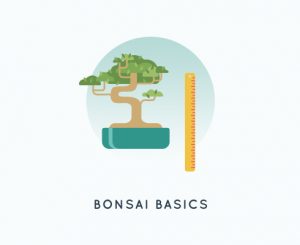


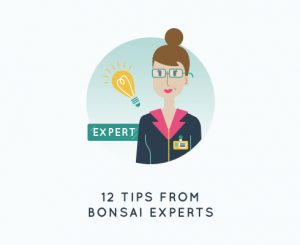
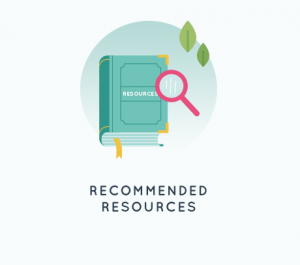
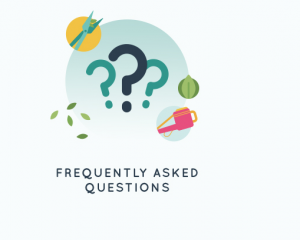


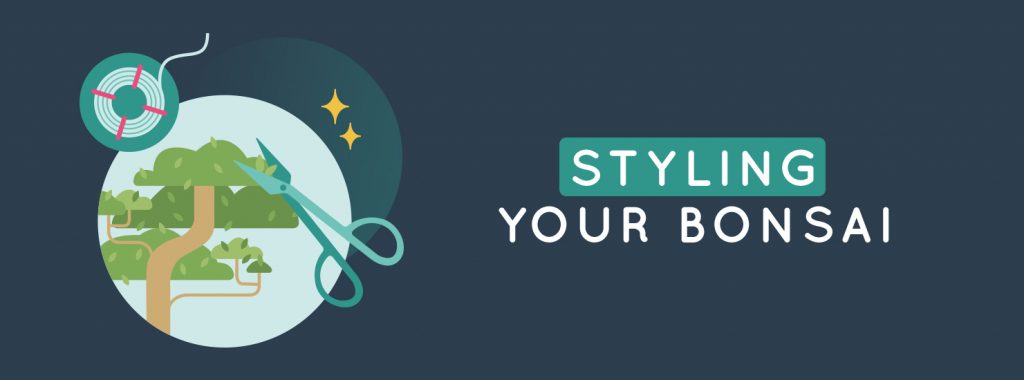
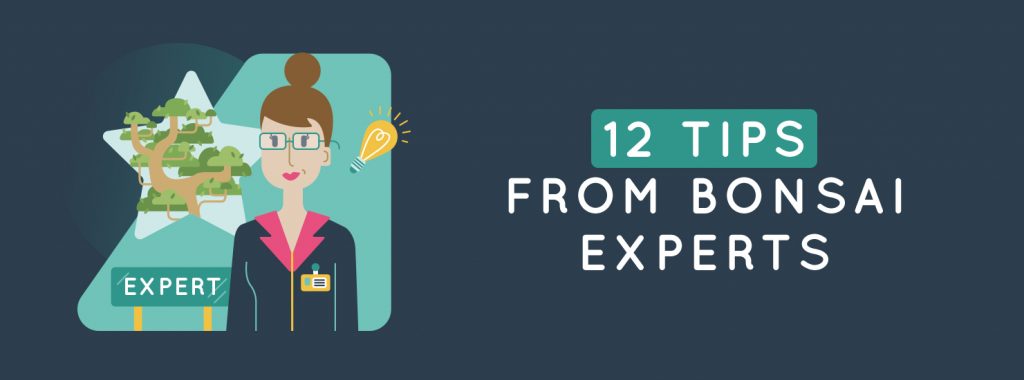



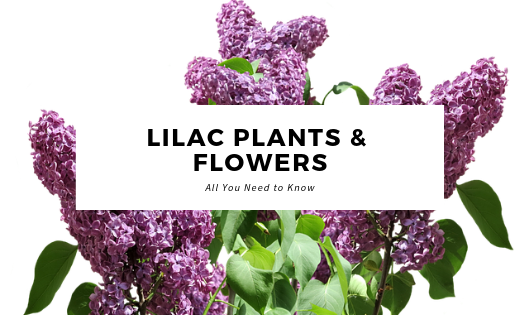

Gabriele Sbaraini
June 6, 2020 at 7:30 amComplimenti. Ottimo lavoro di notevole interesse per chi vuole avvicinarsi al mondo del Bonsai
Ed Nguyen
February 12, 2021 at 2:57 pmI got a bonsai tree from bonsaishop.com.au and it is going well, but these tips are going to help a lot. I’m looking forward to learning so much more!